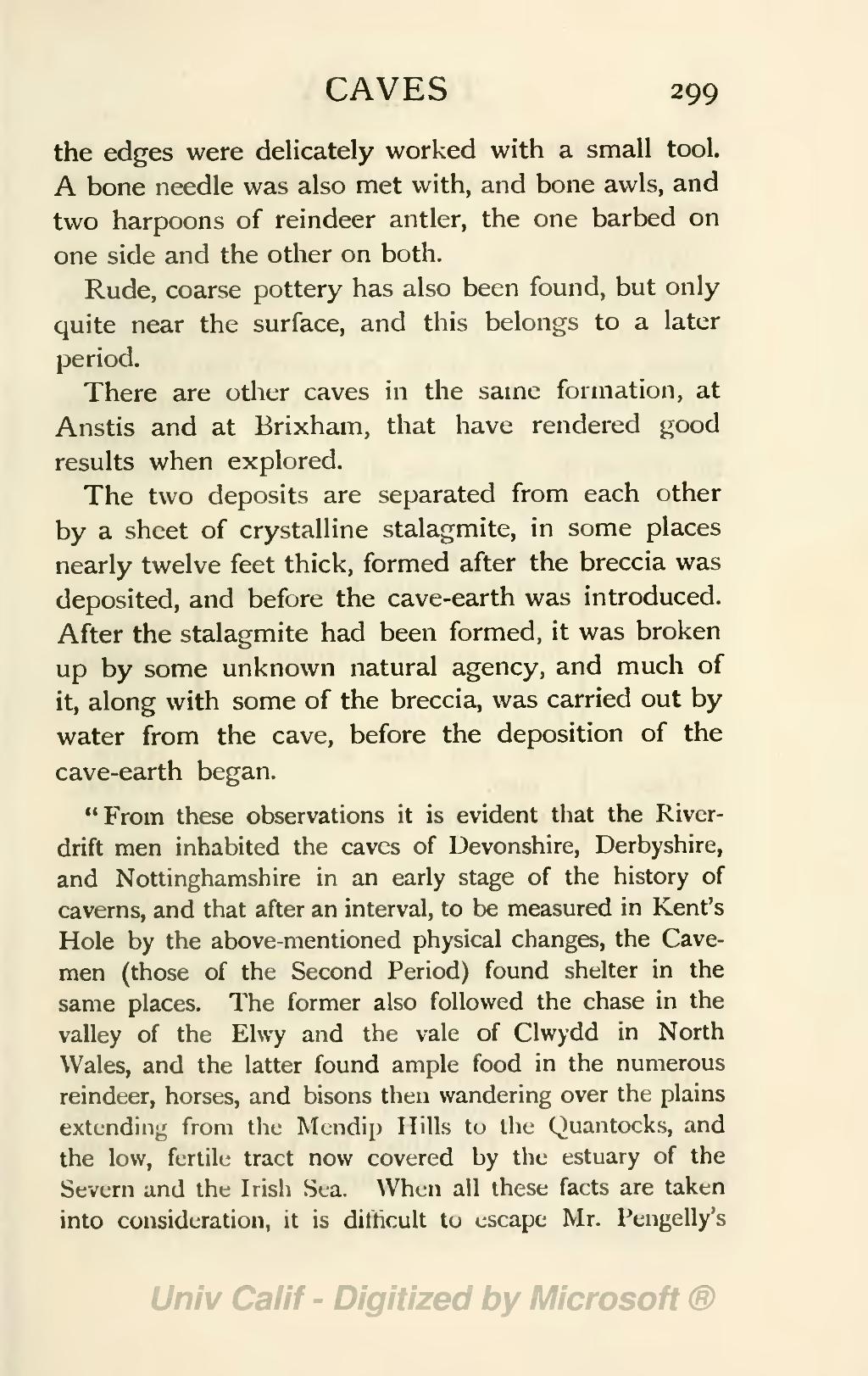the edges were delicately worked with a small tool. A bone needle was also met with, and bone awls, and two harpoons of reindeer antler, the one barbed on one side and the other on both.
Rude, coarse pottery has also been found, but only quite near the surface, and this belongs to a later period.
There are other caves in the same formation, at Anstis and at Brixham, that have rendered good results when explored.
The two deposits are separated from each other by a sheet of crystalline stalagmite, in some places nearly twelve feet thick, formed after the breccia was deposited, and before the cave-earth was introduced. After the stalagmite had been formed, it was broken up by some unknown natural agency, and much of it, along with some of the breccia, was carried out by water from the cave, before the deposition of the cave-earth began.
